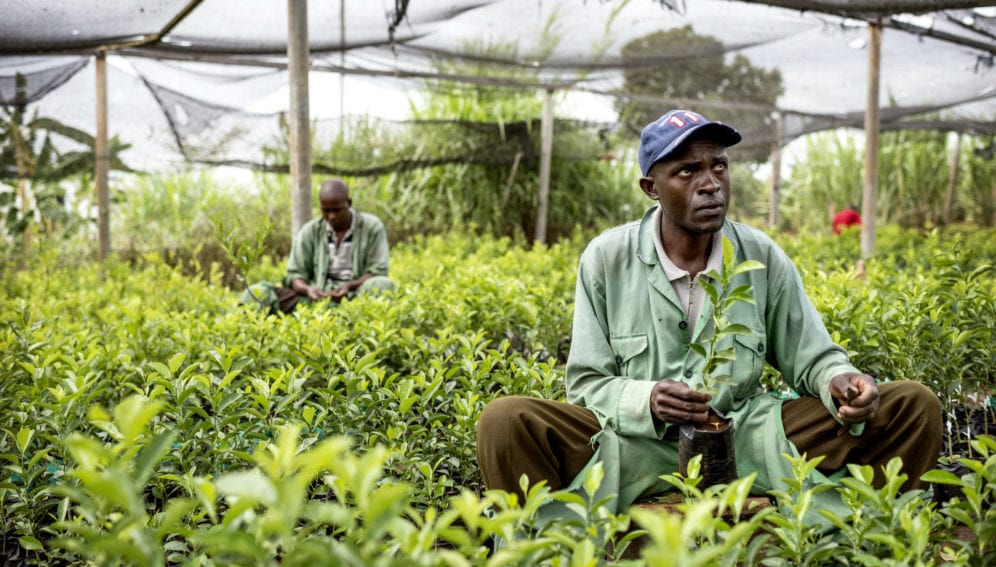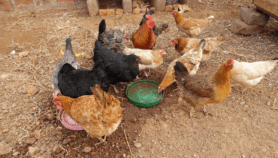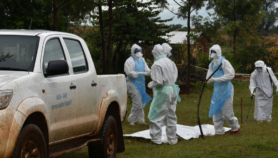Send to a friend
The details you provide on this page will not be used to send unsolicited email, and will not be sold to a 3rd party. See privacy policy.
[MOMBASA] East Africa could soon be facing the threat of a citrus fruit sap-sucking pest with the potential to collapse its regional fruit industry, a scientist says.
The pest called Asian citrus psyllid transmits the bacterium that causes citrus greening disease, which deforms fruits and reduces their commercial value.
According to the FAO, the disease which causes crop losses of up to 100 per cent, is the most devastating citrus disease globally because of how fast it spreads, the difficulty of diagnosing it and the damage it causes.
Smallholders are the hardest hit because they lack the capital to manage the disease, the FAO adds.
“The icipe is working closely with relevant regulatory authorities and providing them with methods, tools and technologies such as traps, attractants, sampling design and methods to monitor and detect the pest early to guide intervention and minimise spread,” says Sunday Ekesi, director of research and partnerships at the Kenya-headquartered International Centre of Insect Physiology and Ecology, also called icipe.
“We are advocating efforts to keep the pest out of a geographical area that it has not invaded… and implementing intense management measures to keep the insect population low and curtail spread,” Ekesi adds.
In an interview with SciDev.Net this week (8 January), Ekesi said that in East Africa the pest was detected in Tanzania and Kenya in 2015 and 2016 respectively.
“The Asian citrus psyllid can survive in both high and low climate areas because it can tolerate temperatures up to 30 degrees Celsius as opposed to the African psyllid that is sensitive to heat and can only develop at temperatures between 22 to 25 degrees Celsius,” Ekesi explains.
“If the matter is not looked into, then within five years we are going to have an epidemic of the Asian citrus psyllid across Africa.”
Inusa Jacob Ajene, icipe
Citrus is a major fruit crop of global food and nutritional security and international trade. Commonly known species of commercial importance are sweet oranges, lemons, limes and grapefruit.
Annual global production of citrus was at 12 million metric tonnes in 2016 according to a FAO report. Kenya produced about 114,000 metric tons of citrus while production in Tanzania was at 426,000 metric tons.
Last month (3-5 December), an international meeting was held in Kenya to discuss lessons in managing the pest.
“We are still far from development of resistant cultivars [breeds of crops] but it’s an area of research that requires attention.” Ekesi says, adding that the spread of the pest could end the citrus industry in Kenya and other African countries.
He urges policymakers to act urgently to tackle the possible impending scourge.
Inusa Jacob Ajene, a doctoral research fellow under the icipe’s African Regional Postgraduate Programme in Insect Science, adds that the situation must be looked into intensively before it is too late.“If the matter is not looked into, then within five years we are going to have an epidemic of the Asian citrus psyllid across Africa,” he says.
Kinyua Zachary, head of crop health at the Kenya Agricultural and Livestock Research Organisation, tells SciDev.Net, “What we need to do is to generate sufficient knowledge on how the pest affects nearby fruits and efforts to manage it.”
This piece was produced by SciDev.Net’s Sub-Saharan Africa English desk.














